The Nissan Magnite and all-new Hyundai i20 have been the most recent launches in India. To say that people were eagerly waiting for these launches, would be an understatement. But before we move on to the comparison, let us remind you why we do this Clash of Segments. With the aggressive introductory pricing of the Nissan Magnite, it causes an overlap in the price range with so many popular cars in India.
In this instance, the Magnite starts at a mere Rs 4.99 lacs and tops at Rs 9.35 lacs. Hyundai i20 although a premium hatchback, starts at Rs 6.8 lacs and the fully-loaded top trim commands a premium of Rs 11.18 lacs. If you are someone who is planning to spend around Rs 10 lacs on a new car, this article will help you pick the right option for you. Do check out our Nissan Magnite vs Maruti Suzuki Baleno comparison too!
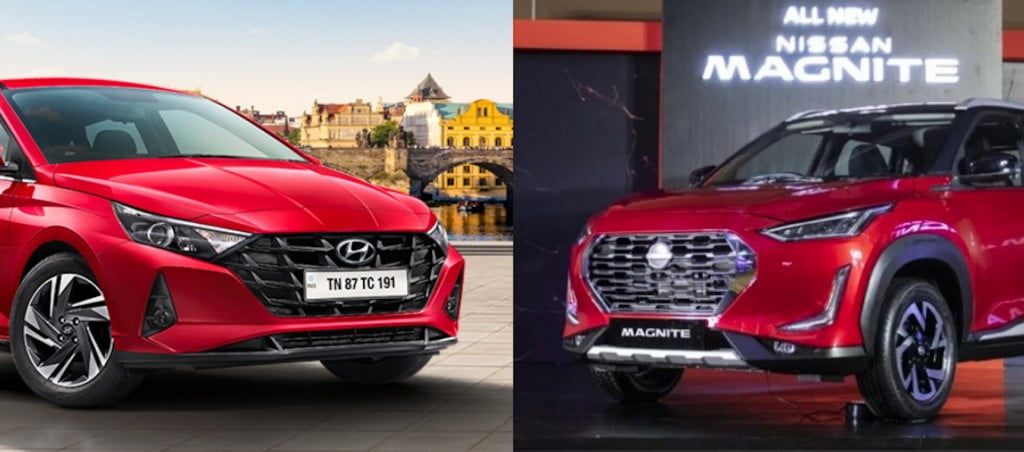
Nissan Magnite vs Hyundai i20 – Specifications
| Nissan Magnite | Hyundai i20 | |
| Engine | 1.0L Petrol; 1.0L Turbo-Petrol | 1.2L Petrol; 1.0L Turbo GDi Petrol; 1.5L Diesel |
| Transmission | 5-speed Manual; CVT Automatic | 5-speed Manual, CVT (Petrol); 7-speed DCT / iMT (Turbo-petrol); 6-speed Manual (Diesel) |
| Power | 71 bhp / 99 bhp | 82 / 88 bhp (Petrol); 118 bhp (Turbo-petrol); 98 bhp (Diesel) |
| Torque | 96 Nm / 160Nm (152 Nm-CVT) | 114 Nm (Petrol); 171 Nm (Turbo-petrol); 240 Nm (Diesel) |
Nissan Magnite is powered by 3-Cylinder 1L Petrol and a bit more powerful Turbo-Petrol Engines making 71 bhp/96 Nm and 99 bhp/160 Nm respectively. Now, Magnite having a Kerb weight of a mere 1039 kg is able to draw a lot of performance from these engines. Although the steering is a bit inert, the turbo-powered engine is decent enough to put you back in your seat once the turbo kicks in. Magnite offers a decent ride and handling experience, especially around the corners. The stiff suspension translates to high-speed stability.
However, the Hyundai i20 offers you a whole plethora of engine and transmission options. So, no matter your requirements, i20 has you covered. It offers two petrol engines: 1.2l Petrol making a decent 82 bhp / 114 Nm and the most powerful engine in the segment, 1.0L Turbo-petrol making a whopping 118 bhp / 171 Nm. The former can be combined with either a 5-speed manual or a CVT automatic. The Turbo-petrol offers either an all-new iMT (Intelligent Manual Transmission), which is nothing but a clutchless manual, or a quick-shifting 7-speed DCT. The 1.5L Diesel on the other hand comes mated to a single 6-speed manual gearbox making 98 bhp / 240Nm. So, if you want a variety of options for your engine and gearbox combination to choose from, the Hyundai i20 will suit you the best.
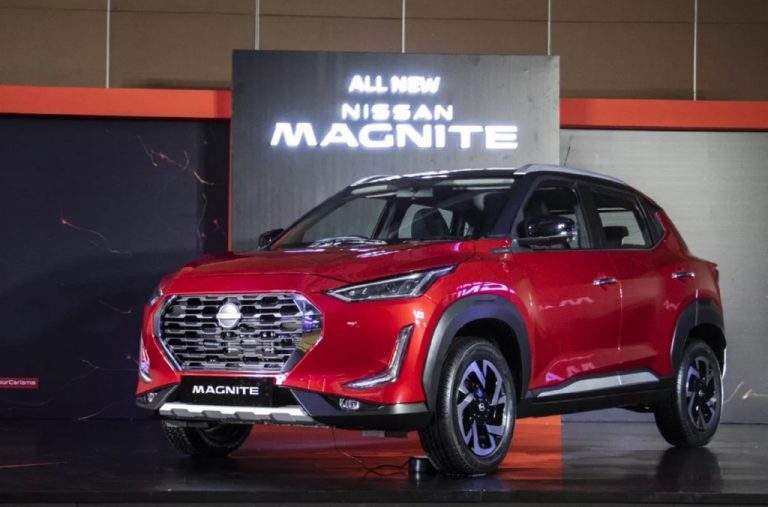
Also read: 80% of buyers opt for mid-spec Sportz and top-spec Asta variant!
Nissan Magnite vs Hyundai i20 – Fuel Economy
| Manual | Automatic | |
| Nissan Magnite (Turbo) | 18.75 (20) | 17.70 |
| Hyundai i20 Petrol (Turbo) | 20.35(20.25) | 19.65 (CVT); 20.28 (DCT) |
| Hyundai i20 Diesel | 25.20 | – |
Magnite gives a rather impressive 20 kmpl with its 1L Turbo-Petrol and a healthy 18.75 kmpl with the naturally aspirated engine. The figure falls slightly at 17.70 kmpl with CVT Automatic. This is a decent mileage considering the size of the sub-4m SUV. In comparison, the Hyundai i20 has never been a favourite in terms of mileage, but that has changed this time around. The naturally aspirated manual gives an impressive 20.35 kmpl. The CVT takes you around 19.65 km in a litre and DCT around 20.28. But it is, of course, the Diesel that is the most frugal option with an impressive 25.20 kmpl. To summarise, if you are someone who prioritizes fuel economy, the Hyundai i20 is the one you should go for.
Nissan Magnite vs Hyundai i20– Dimensions
| Parameter | Nissan Magnite | Hyundai i20 |
| Length (mm) | 3994 | 3995 |
| Width (mm) | 1758 | 1775 |
| Height (mm) | 1572 | 1505 |
| Wheelbase (mm) | 2500 | 2580 |
| Boot Space (l) | 336 | 311 |
The Hyundai i20 is incidentally a bit longer and wider than the Nissan Magnite. Although, Magnite being a sub-compact SUV, is taller. i20 also boasts of a longer wheelbase, translating to a ton of interior space in general and increased rear space in particular. One area where the Hyundai i20 has significantly improved as compared to the previous model is the rear space, owing to the longer wheelbase this time around. Although, the boot of i20 is a bit smaller than that of Magnite. In terms of dimensions, there isn’t much to choose between the two, apart from personal preference.
Nissan Magnite vs Hyundai i20 – Exteriors
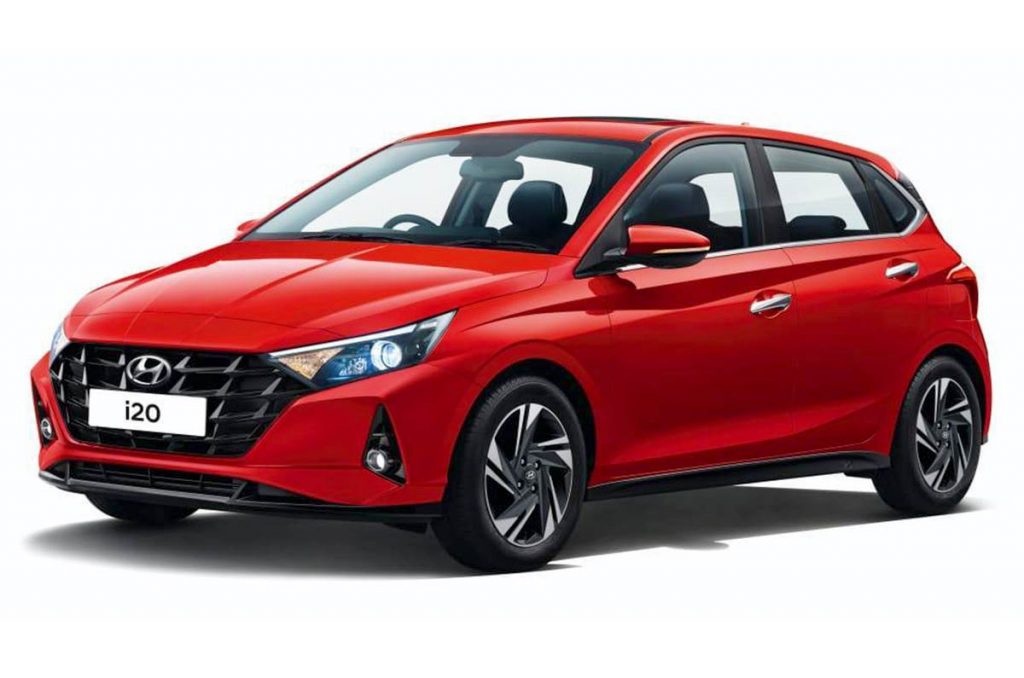
Nissan officially calls Magnite: Bold and beautiful and that is precisely what Magnite’s exteriors are. You just can’t miss the large chrome grille at the front, along with the sleek and stylish First-in-segment Bi-Projector LED Headlamps with LED turn indicators. The L-shaped LED DRLs with LED fog lamps also accentuate the edges of the bumper. The aggressive wheel arches and a 205 mm ground clearance gives it a rather sporty stance. The side profile really stands out, thanks to a chrome beltline running around the windows as well as a quarter-glass at the rear to provide a sense of roominess in the cabin. The wide-split tail lamps make it look wider than it actually is. All-in-all, bold design choice is what Nissan has gone for here and we are not complaining. It certainly looks sporty and bold, especially with those silver skid plates.
The 3rd gen i20 is sure to make heads turn everywhere you go with its bold characteristic creases on the front, along with the Parametric jewel pattern grille. The LED Projector Headlamps and LED DRLs additionally, enhances the front look and make it look bolder and wider. The chrome on the window rims also gives the side profile a modern and flashy look. The Z-shaped tail lamps, joined by a chrome strip are extremely sporty but could be polarising. The puddle lamps and chrome outside door handles do make it look premium.
These two cars are undoubtedly very modern and bold looking, but we do like what Hyundai has done this generation i20 a tad bit more.
Nissan Magnite vs Hyundai i20 – Interiors, Features and Safety
Being the latest launch, Magnite is filled to the brim with all the techs and features. The interiors of the Magnite are certainly driver-oriented, with the centre console tilted 5 degrees towards the driver. There are 7-inch digital cluster and 8-inch digital instrument display with Wireless connectivity with Apple CarPlay and Android Auto. Steering mounted controls and cruise control helps in enhancing accessibility and convenience. As optional features, one can upgrade to Wireless charging, JBL Audio System and Nissan Connected Car Tech. On the safety front, there is a 360-degree surround-view camera, Hill-start Assist, Traction Control, Vehicle Dynamic Control, ISOFIX child seat mounts, Tyre Pressure Monitoring System, ABS and Dual-Airbags.
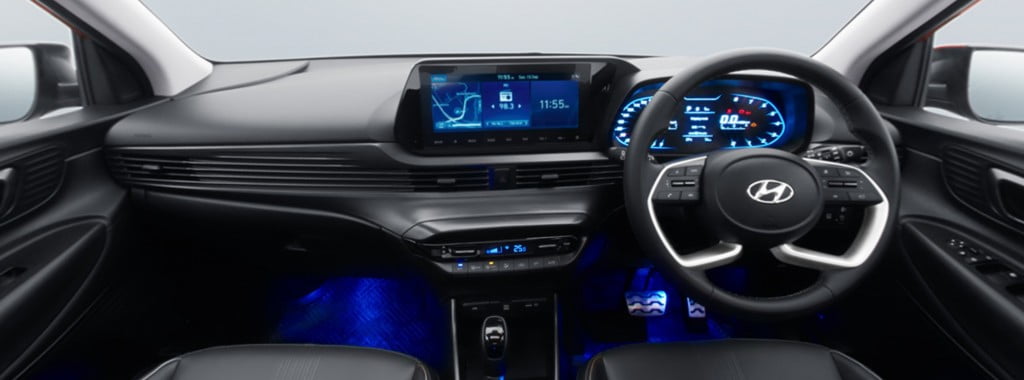
Arguably, the Hyundai i20 is one of the most feature-packed hatchbacks in the country, with so many First-in-Class features on the list. The feature list is immensely comprehensive so let’s dive into it. On the safety front, the 3rd Gen i20 gets equipped with 6 airbags, ABS, ESC, Rear View Camera and segment firsts: Tyre Pressure Monitoring System and Hill Start Assist. The Digital Instrument Cluster and the steering wheel have been imported from the higher segment Hyundais like the Verna and the Creta.
The 10.25-inch Touchscreen Infotainment System comes equipped with Apple CarPlay and Android Auto along with the Hyundai’s own Connected Car Tech with Bluelink App and wireless charging. There is an air purifier incorporated in the centre console between the two seats. Another segment first is the Bose 7-Speaker Audio System with a subwoofer. For the love of Sunroofs in India, Hyundai has made sure that this premium hatchback comes with an electric sunroof as well. Other features include Ambient lighting, Automatic climate control, Cruise Control, Rear AC Vents, Leatherette Upholstery, Cooled Glovebox and Keyless Entry and Go.
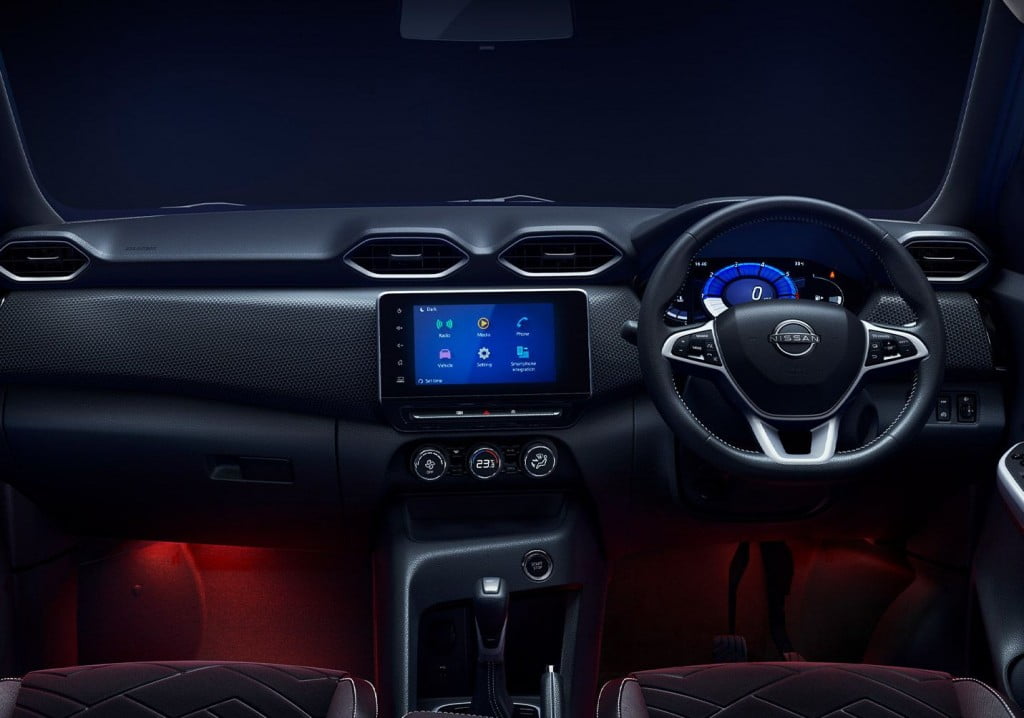
So, when it comes to features and safety, Hyundai i20 has a clear edge over the Nissan Magnite.
Which one to pick?
Well, both newly launched Magnite and Hyundai have their positives and a few negatives. While on one hand, Magnite is aggressively priced with a decent engine and transmission options and handy features all around, it does come second Hyundai i20 in terms of convenience and feel-good features. Hyundai i20 on the other hand, ticks all the right boxes, be it the engines and gearbox combinations, features, safety, looks and more. But it does command a big premium for all this when it comes to prices. The top-trim 1L Turbo-petrol DCT at Rs 11.18 lacs is not cheap by any standards. So, if you want to shell out the big bucks for much more comfort and convenience, the Hyundai i20 should be your choice. Otherwise, the Nissan Magnite is an excellent value for money proposition.


